#george bellows
Explore tagged Tumblr posts
Text

George Bellows, Stag at Sharkey’s (1909)
433 notes
·
View notes
Text

George Bellows (American, 1882–1925)
Two Girls, 1917
403 notes
·
View notes
Text

Summer Night, Riverside Drive (George Bellows, 1909)
277 notes
·
View notes
Text

Title: Edge of the Pasture -- Glow of the Sun Artist: George Bellows (American, 1882-1925) Date: 1916 Genre: landscape painting Movement: Ashcan School Medium: oil on panel Dimensions: 45.7 cm (17.9 in) high x 55.9 cm (22 in) wide Location: private collection
#art#art history#George Bellows#landscape#landscape painting#landscape art#Maine#New England#Ashcan School#The Eight#American Realism#American art#20th century art#oil on panel#private collection
125 notes
·
View notes
Text

George Bellows Nude Girl, Miss Leslie Hall 1909
78 notes
·
View notes
Text

96 notes
·
View notes
Text
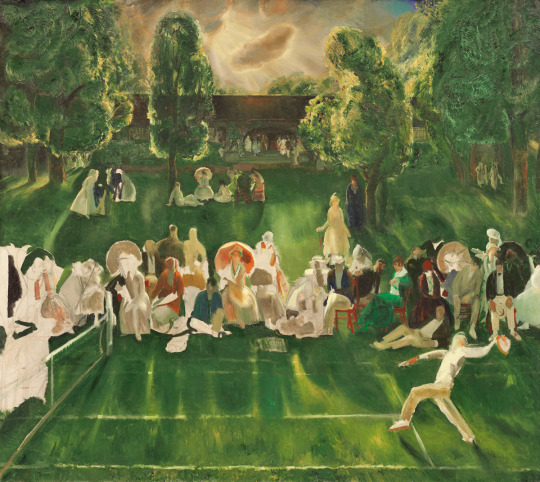
George Bellows (American, 1882-1925), Tennis Tournament, 1920. Oil on canvas, 59 x 66 in.
196 notes
·
View notes
Text
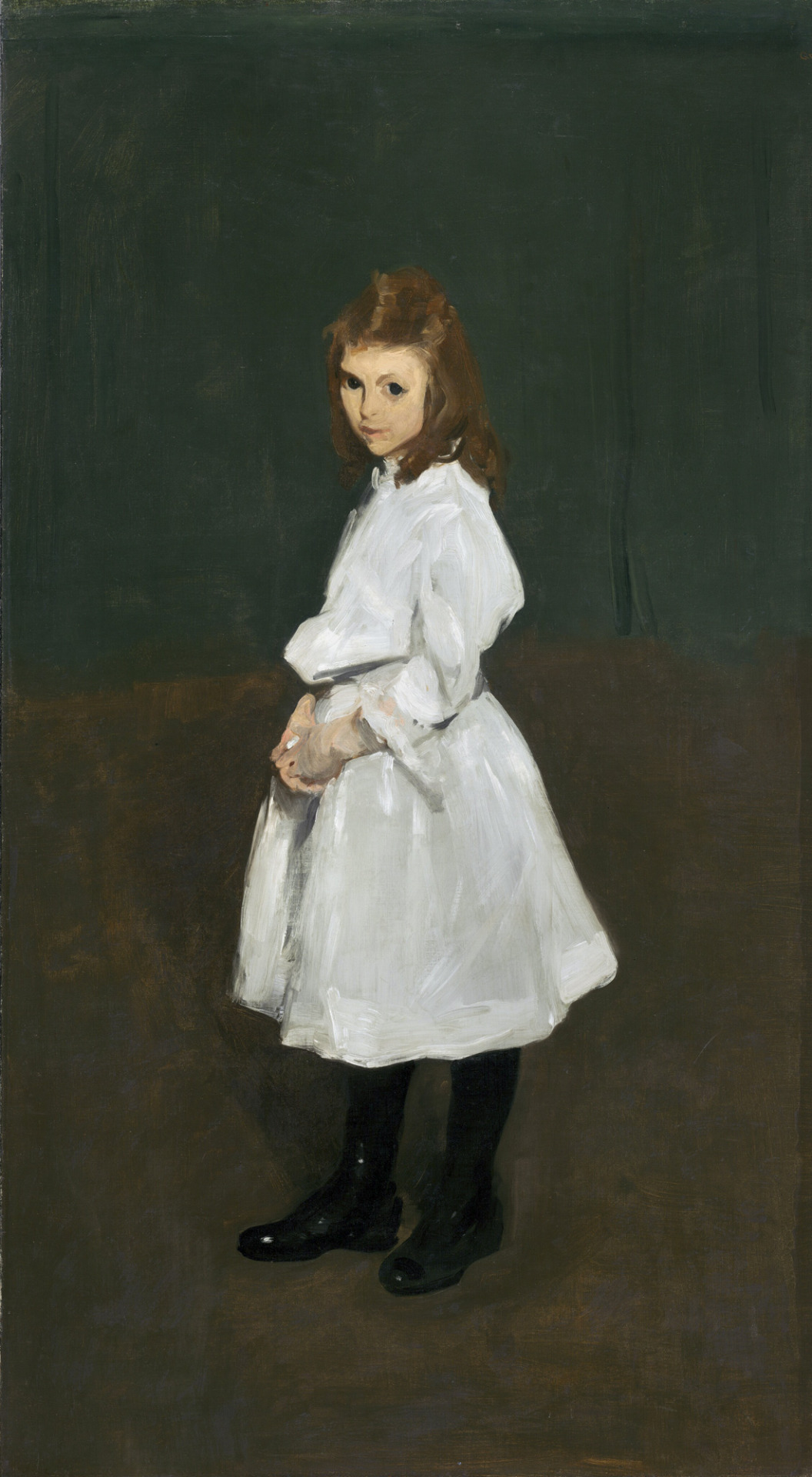
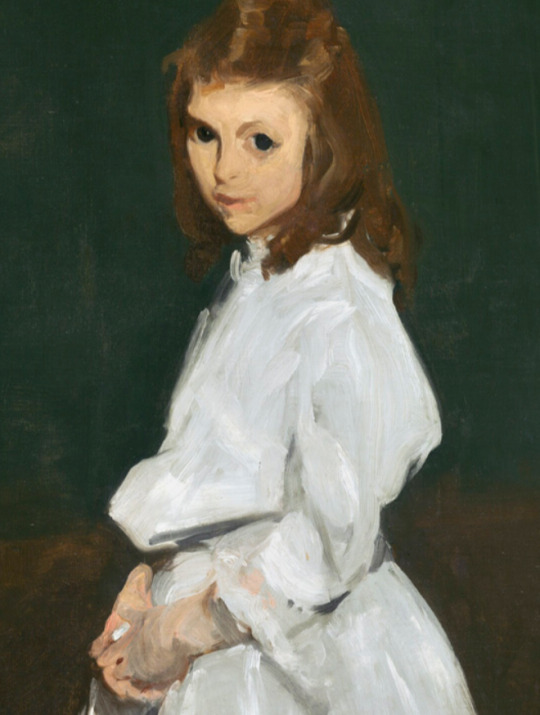
George Bellows (American, 1882-1925) Little Girl in White (Queenie Burnett) 1907
#fine art#artist#art history#oil on canvas#history#fineart#artwork#painting#oil painting#art#George Bellows
33 notes
·
View notes
Text
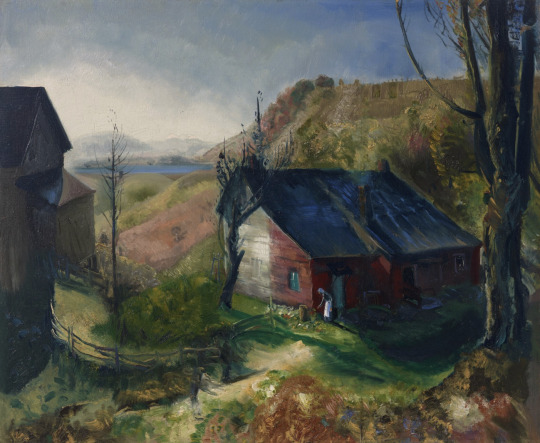
George Bellows. Mountain Farm, 1922.
oil on board
56 notes
·
View notes
Text

My Mother
Artist: George Wesley Bellows (American, 1882–1925)
Date: 1921
Medium: Oil on canvas
Collection: Art Institute of Chicago, Chicago, IL, United States
Description
“There she would sit, as in a throne,” a niece once recalled of George Bellows’s mother, Anna. In this painting, which evokes the Parisian interiors of such French artists as Édouard Manet, Bellows depicted his mother in a large chair in the Victorian parlor of their family home in Columbus, Ohio. This forthright presentation of a distinguished, elderly woman with a strong character, coupled with the subdued palette, also recalls the portraiture of Thomas Eakins, whom Bellows greatly admired. The painting’s power derives in part from its highly structured composition. Influenced by the artist Jay Hambidge’s theory of dynamic symmetry, Bellows constructed the portrait in an organized, geometric arrangement of proportionate rectangles and triangles.
#portrait#full length#female#seated#american culture#ohio#parlor#interior scene#chair#window#curtains#window shutters#black dress#wall mirror#painting#oil on canvas#fine art#art institute of chicago#george bellows#american painter#american art#artwork#oil painting#20th century painting
14 notes
·
View notes
Text
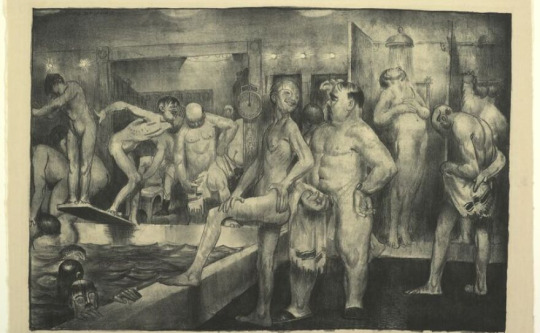
Shower Bath (1917), George Bellows
#George Bellows#bathhouse#queer art#male figure#gay art#art history#gay artists#male nude#gay#queer history
279 notes
·
View notes
Text

The Cliff Dwellers, George Bellows
18 notes
·
View notes
Text
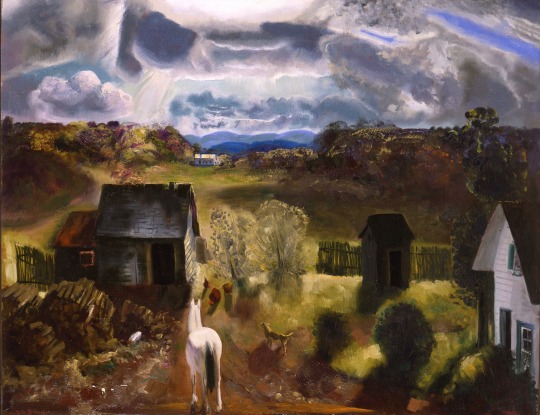
The White Horse by George Bellows, 1922
252 notes
·
View notes
Text

A Stag at Sharkey's (George Bellows, 1909)
111 notes
·
View notes
Text

The Lone Tenement, George Bellows, 1909
#art#art history#George Bellows#George Wesley Bellows#landscape#landscape painting#cityscape#New York City#Ashcan School#Realism#Realist art#American Realism#American art#20th century art#oil on canvas#National Gallery of Art
153 notes
·
View notes









